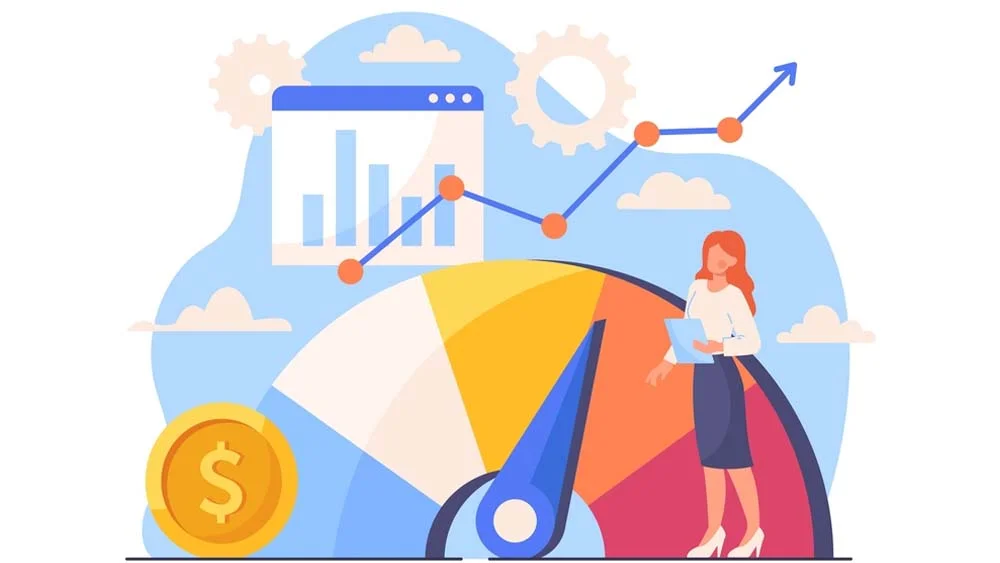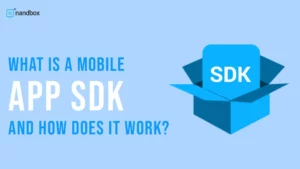Navigation is the main concern for all app developers, especially those working on apps that include a lot of content. As we all know, content is an integral part of any app. However, as apps get more advanced, they start to include more complex features and functionalities. This makes it hard for content to shine. Because of this, it is now essential for developers to come up with more seamless and swift navigation patterns and techniques to help users get through today’s complex apps. One of the navigation patterns that found its way from websites to being implemented on applications is app pagination. Read on to learn everything about pagination and find out whether it is an effective navigation pattern or not.
Imagination time! Well, imagine that you are going somewhere to, let us say, eat. This place looks outstanding from the outside. It is colorful, has a great display, etc. However, the moment you open the door to this place, you are completely and utterly lost. The place is closer to being an unsolvable maze; you don’t know how to get through. The simplest and most logical action you’d take next is to leave. What else is there to do, really, if there’s nothing within reach?
Here, let us take the same example and apply it to an application. Navigation and design is the map that users use to get through the application and explore everything inside. Imagine you gave this user an undefined and unfathomable map; this would be completely unacceptable. Keep in mind that each operating system has its design practices that differ significantly.
Just as features and complexity navigation also plays a significant role in luring and attracting users in. Seriously, what would you rather try, an app with many features but poor navigation, or an app with a moderate amount of features and an excellent navigation pattern? Functionality, features, and navigation are very interconnected aspects of development. This means that the effectiveness of one depends on the effectiveness of the others. Thus, you will never find a functional app with a poor navigation pattern.
An Overview Of Pagination
Pagination in mobile app development refers to the practice of dividing content into smaller, manageable chunks or pages. Swiping, tapping on page indicators, or using a specialized pagination control are all viable options for navigating these pages. The goal is to provide users with an intuitive and efficient way to access information without overwhelming them with excessive scrolling or loading times.
Implementing pagination requires careful consideration of the app’s content structure and user flow. Developers need to determine the optimal page size, the number of pages to display at a time, and the navigation controls to be used. By understanding the concept of pagination and its underlying principles, developers can create mobile apps that offer an effortless and enjoyable user experience.
Types of pagination techniques in mobile apps
When it comes to implementing pagination in mobile apps, developers have several techniques at their disposal. Each technique offers a unique way of navigating through content, and the choice depends on the specific requirements and user experience goals of the app. Let’s explore some common pagination techniques:
- Swipe-based pagination: This navigation method involves swiping left or right to move between pages. It is frequently utilized in apps that display content in a horizontal layout, such as image galleries and news articles.
- Tappable page indicators: The number of pages can be represented by a series of dots or icons. Users can use these links to jump to a specific section of the site. This method is frequently used in apps that present information vertically, like lists.
- Scroll-based pagination: The method involves dynamically loading content as the user navigates the app. To avoid interrupting the flow of the page while scrolling, additional content is loaded automatically as the user nears the page’s end. This method is widely used, especially on social media apps like Facebook.
The choice of pagination technique depends on various factors, including the app’s content structure, user flow, and overall design. Developers need to carefully consider the specific requirements of their app and choose the pagination technique that best fits their needs.
Benefits of Using Pagination in Mobile App Development
The use of pagination in mobile app development offers several benefits that directly contribute to improved user engagement and overall app performance. Let’s explore some of these benefits:
Enhanced User Experience
Pagination makes it simple for readers to move between sections of text without having to repeatedly scroll down the page. As a result, users are more likely to be satisfied with the app as a whole because they can more quickly accomplish what they want.
Faster Loading Times
Pagination significantly reduces the amount of data that must be loaded all at once by dividing content into smaller sections. This is particularly helpful for apps that manage large amounts of content or media files. As this can drastically reduce loading times.
Improved Performance
The use of pagination can improve the efficiency of mobile applications. Smoother scrolling and quicker response times are the result of the app loading content in smaller amounts, which allows for more efficient use of resources and more seamless performance.
Reduced Cognitive Load
Users can easily become overwhelmed when presented with a continuous flow of content. Therefore, pagination aids users by breaking down large pages into smaller, more digestible sections.
Better Data Management

Using pagination, developers can improve data recovery and storage efficiency by loading content on demand. This means that only the data that is actually needed is retrieved from the server or stored locally, which both saves bandwidth and makes better use of available space.
Reduced Data Usage
There is usually a cap on how much data can be used on mobile devices. By only loading the data that is actually needed, pagination helps users consume less data and money and avoid going over their data cap. Overall, the use of pagination in mobile app development can lead to significant improvements in user engagement, satisfaction, and app performance. By implementing pagination techniques effectively, developers can create mobile apps that seamlessly guide users through content, resulting in a more enjoyable and efficient user experience.
Pagination vs. Infinite Scrolling: Which Will Win With a K.O?
Coming up is the ultimate battle in the UI design world: pagination or infinite scrolling. If you don’t know, infinite scrolling is a navigation pattern that was actually inspired by or more of an outcome of the pagination method. As the world shifted into apps, app designers were finding a new technique to replace pagination, which was more common for websites, and kind of still is. The idea of infinite scrolling shines through, and as much as it may be similar to scroll-based, they are also very different. Infinite scrolling is a technique where a user has to scroll to get more content. The key difference between this and scroll-based pagination is that the latter presents more content.
The idea of infinite scrolling is to eliminate the need to load and scroll through new pages by infinitely scrolling. To further understand, let us explore an example. Pinterest is an app favored by millions of users and the best example of infinite scrolling. When you search for any pictures or content on Pinterest, you get millions of results, which usually result in an enormous number of pages. To eliminate this need, Pinterest applies the technique of infinite scrolling to help users get what they want without jumping from one page to another. Instead, they would instantly get to the right result and scroll back and forth.
The ease of the infinite scrolling technique makes it commonly used in most applications now. However, the proper navigation technique depends entirely on your application and its requirements. Some apps usually don’t include as much content as Pinterest, so they favor pagination more.
Pagination Design Considerations for Improved Performance
When designing pagination for mobile apps, it is crucial to consider performance implications. Here are some design considerations to keep in mind:
- Page size: Determine the optimal page size based on the app’s content and user flow. Avoid excessively long pages that may cause performance issues or overwhelm users.
- Lazy loading: Implement lazy loading to load content only when needed. This reduces initial loading times and allows for faster navigation between pages.
- Caching: Implement caching mechanisms to store previously loaded content locally. This reduces the need for repeated data retrieval, improving performance and reducing bandwidth usage.
- Progressive loading: Load content progressively as users scroll or navigate through pages. This ensures a smooth and uninterrupted user experience while minimizing loading times.
- Image optimization: Optimize images for mobile devices by compressing and resizing them appropriately. Large and uncompressed images can significantly impact loading times and performance. By considering these design considerations, developers can ensure that pagination in mobile apps not only enhances the user experience but also maintains optimal performance.







